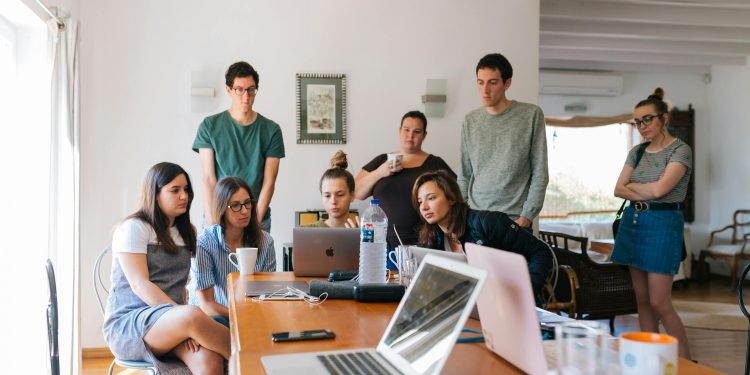In their seminal 1995 research paper, The Need to Belong, Roy Baumeister and Mark Leary wrote, “much of what we do is done out of a sense of belonging.” They argued that the desire to belong is a fundamental human need and that a lack of belonging can lead to significant psychological distress. This sense of belonging— and the multitude of relationships that foster it—is increasingly becoming the primary value of offices today.
Many of us know this instinctively, but we must avoid viewing offices as merely places to support tasks. While activity-based working (ABW) remains an important design approach, in today’s world, activities can be done almost anywhere, not just in offices.
Whether people refer to “culture,” “collaboration,” or “connection,” the truth is that it’s relationships that are under strain in an era of highly distributed work. When people come to the office, they are often seeking to strengthen these relationships. To meet the evolving expectations of organizations, the workplace can play a critical role in building and nurturing relationships, thereby fostering a deeper sense of belonging.
At MillerKnoll, we have extensively researched how physical workplaces impact individuals, teams, and communities. Drawing on these insights, we believe it’s time to complement ABW with a model that links the design of different spaces to the types of relationships they can support. This relationship-based work model encourages us to consider who needs to be supported, the nature of the interactions they seek, and how thoughtful design can best promote those interactions.
For example, a research initiative called The Enticing Workplace, conducted by Workplace Unlimited, Audiem, and MillerKnoll, found that workers view teamwork, socializing, and connection as the most valuable aspects of being in the office.
Similarly, the Future Forum, a collaborative research project by Slack, MillerKnoll, and BCG, found that camaraderie, collaboration, in-person meetings, and facetime with managers were top reasons people return to the office.
To support these goals, we must design for interactions at various levels:
- Community Level: In the book Bowling Alone, Robert Putnam describes “bridging social capital” as interactions between or among representatives of loosely connected groups. Supporting communities means enabling people who may not work together daily—often referred to as “weak ties”—to connect meaningfully. These connections rarely thrive in digital spaces, so they require thoughtful design in the physical workplace.
- Group Level: Putnam also defines “bonding social capital” as interactions between or among individuals with a defined relationship, such as team members or project collaborators. These “strong ties” flourish in office
settings, where colleagues can interact spontaneously and casually— experiences that virtual meetings don’t always support.
- Individual Level: The individual level is about supporting focus, respite, and renewal, all of which are essential to sustaining social interactions. Periods of restoration are crucial for people to relate in healthy and productive ways.
All of this has profound implications for the spaces employers provide and workplace planners design. Effective planning creates environments that support interactions at the community, group, and individual levels. Designers and managers must become adept at linking the relational value of spaces—project rooms, team neighborhoods, private offices, cafes, and more—to how they foster healthy interactions and relationships.
Interested in ideas for creating spaces that build relationships and enhance belonging? Check out these ideas for inspiring spaces that can help create a stronger sense of community.
Check out the upcoming MillerKnoll Insight Series Webinar covering more details about this subject HERE

Mark is responsible for sharing MillerKnoll’s Insights into the latest thinking in workplace design and related issues. The subjects covered include, Relationship Based Work, Design with Impact, The Psychology of Collaboration, Social Capital, The Science of Happiness, Creativity in the Workplace and Agile Working. Mark is often invited to speak at leading workplace conferences.













